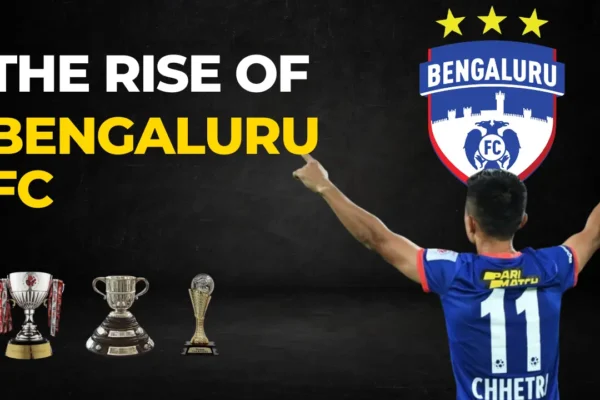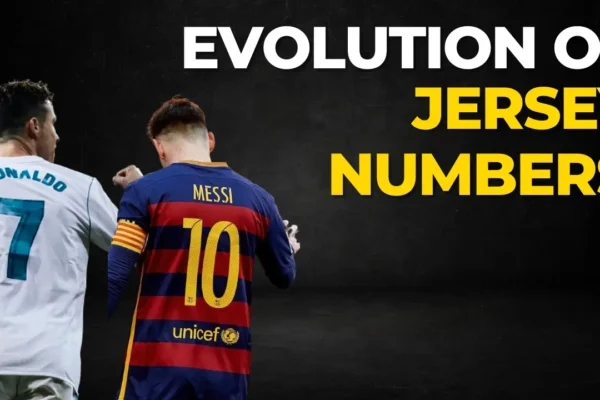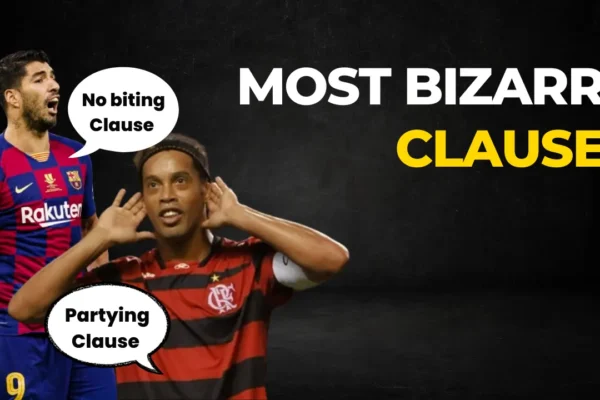

Exploring the Top 5 Defensive Formations in Football
Scoring a lot of Goals might be one of the most important aspects of Football, but not letting your opponents score is also just as important
A well-structured defensive unit can stifle even the most potent attacks, turning the tide of a game and securing crucial victories.
Some Managers are experts in playing this ‘anti-football” tactics, and today we will be exploring the best defensive formations in football.
So, if you are someone who wants to create the best defensive team on the planet in your next EA FC Manager mode or someone who just wants to know more about “haramball,” this article is for you.
Best Defensive Formations in Football (Top 5)
1. 4-3-3:

The 4-3-3, known for its versatility and balance, has become a dominant force in modern football. This formation features four defenders, three central midfielders, and three forwards.
Pros:
- Balance: The 4-3-3 offers a good balance between attacking and defending. The midfield trio provides defensive cover while allowing for attacking transitions through the wingers and the central attacking midfielder.
- Flexibility: This formation can be adapted to various playing styles. It can be deployed with possession-based control or a more counter-attacking approach.
- Pressing: The 4-3-3 facilitates effective pressing high up the pitch, disrupting the opponent’s build-up play and creating opportunities to win the ball back quickly.
Cons:
- Demanding: The formation requires high levels of fitness and tactical understanding from all players, particularly the full-backs, who need to contribute offensively and defensively.
- Vulnerability on the flanks: Overlapping full-backs can leave space behind them, which can be exploited by pacy wingers.
- Central overload: If the central midfielders are outnumbered, the team can be vulnerable to attacks through the middle.
2. 5-3-2:

The 5-3-2 prioritizes defensive solidity with a back three, three central midfielders, and two strikers.
Pros:
- Defensive strength: The five defenders provide a strong defensive line, making it difficult for opponents to break through.
- Controlling midfield: The three central midfielders offer good control in the middle of the park, allowing for effective ball circulation and denying space to the opposition.
- Set-piece threat: The presence of three central defenders can be advantageous during set-pieces, both offensively and defensively.
Cons:
- Limited width: With no natural wingers, the team might struggle to create width in attack, relying heavily on the central midfielders for creativity.
- Slow build-up: This formation can be slow in transitioning from defense to attack, making it less suitable for teams that prefer a fast-paced, attacking style.
- Susceptibility to counter-attacks: Leaving only two players upfront can make the team vulnerable to quick counter-attacks.
3. 3-4-3:

The 3-4-3 offers a more attacking approach with three central defenders, four midfielders (two wingers and two central midfielders), and three forwards.
Pros:
- Attacking dominance: The formation allows for a strong attacking presence with three forwards and wingers who can provide width and creativity.
- Pressing: Similar to the 4-3-3, the 3-4-3 facilitates effective pressing, with the wing-backs playing a crucial role in disrupting the opponent’s build-up play.
- Dominant midfield: The presence of four midfielders can offer control in the center of the park, dictating the tempo of the game.
Cons:
- Defensive vulnerability: The use of only three central defenders can leave the team exposed to attacks through the middle, especially against teams with strong attacking midfielders.
- Demanding on wing-backs: The wing-backs have significant responsibilities, requiring them to contribute offensively and defensively throughout the game, which can be physically demanding.
- Susceptibility to counter-attacks: Similar to the 5-3-2, leaving only three defenders at the back can make the team vulnerable to quick counter-attacks.
4. 4-4-2 (Diamond):

The 4-4-2 diamond formation utilizes four defenders, a midfield diamond with a defensive midfielder at the base, two central midfielders, and two strikers.
Pros:
- Compactness: The diamond shape in midfield offers good compactness, making it difficult for opponents to penetrate through the center.
- Flexibility: This formation can be adapted to different playing styles, allowing for a more possession-based approach or a counter-attacking strategy.
- Strong midfield presence: The midfield diamond provides good control in the middle of the park, offering both defensive solidity and attacking creativity.
Cons:
- Limited width: Similar to the 4-4-2 formation, the diamond can limit width in attack, relying heavily on the full-backs and central midfielders to create opportunities on the flanks.
- Demanding on the single pivot: The defensive midfielder in the diamond carries a significant burden, requiring excellent positional awareness, tackling ability, and stamina.
5. 4-2-3-1:

The 4-2-3-1 formation features four defenders, two defensive midfielders, three attacking midfielders (often playing as a wide playmaker, a central attacking midfielder, and a supporting striker), and a lone striker.
Pros:
- Tactical flexibility: This formation offers versatility, allowing teams to switch between possession-based control and counter-attacking strategies depending on the situation.
- Strong midfield: The two defensive midfielders provide a solid foundation in the center of the park, protecting the back four and offering support for the attacking midfielders.
- Creative freedom: The three attacking midfielders offer creativity and flexibility in attack, allowing for various attacking approaches.
Cons:
- Isolation of the lone striker: The lone striker can become isolated if the team struggles to create clear-cut chances and provide sufficient support.
- Demanding on the wingers: The wide playmakers need to be effective defensively and offensively, contributing to both attack and defense throughout the game.
- Susceptibility to counter-attacks: Leaving only one striker upfront can make the team vulnerable to quick counter-attacks, especially if the midfield loses possession in dangerous areas.
Conclusion:
Choosing the “best” defensive formation ultimately depends on various factors, including the team’s playing style, player strengths and weaknesses, and the specific opponent they are facing.
Each formation offers unique advantages and disadvantages, requiring careful consideration and tactical adjustments to maximize its effectiveness.
By understanding the strengths and weaknesses of these formations, coaches and players can develop strategies that best suit their team’s needs and aspirations on the field.
It is important to remember that football is a dynamic and fluid game, and formations are just one part of the tactical equation.
Effective communication, teamwork, and individual player skills all play crucial roles in building a strong defense that can withstand any challenge.







